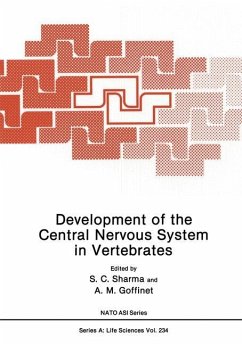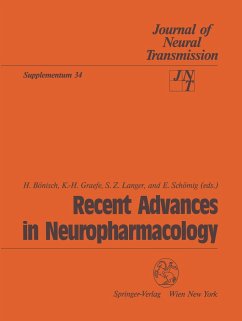
Central Nervous System Diseases and Inflammation
Versandkostenfrei!
Versandfertig in 6-10 Tagen
113,99 €
inkl. MwSt.

PAYBACK Punkte
57 °P sammeln!
The purpose of Central Nervous System Inflammation and Disease is to provide a succinct and well-organized reference volume focused on inflammatory CNS disease to a wide audience. In particular, this text is comprised of four sections revolving around current areas of interest within the field of neuroimmunology, virology, pharmacology and disease. Sections of this text focus on a specific category of diseases as well as the pharmacological, virological, and immunological effects of and on the disease. For example, this text explores how chemokines affect disease.
Although many have covered this topic, few have broken it down at this level. Each disease is broken down on a variety of scientific levels without getting into the history of the disease. At this level, we believe the targeted audience is familiar with the background information. This approach provides a succinct overview of a specific subject relating to interrelated topics pertaining to neurology, immunology and disease.
Although many have covered this topic, few have broken it down at this level. Each disease is broken down on a variety of scientific levels without getting into the history of the disease. At this level, we believe the targeted audience is familiar with the background information. This approach provides a succinct overview of a specific subject relating to interrelated topics pertaining to neurology, immunology and disease.
Up until approximately 20 years ago, the idea that the central nervous system (CNS) and components of the immune system were dynamically interactive was considered impossible (or at least highly unlikely) as the CNS was judged an immunosuppressive environment based upon experimental evidence highlighting the survival of tissue grafts within the brain. Additional evidence supporting this viewpoint included (i) the presence of the blood-brain barrier (BBB) which p- vides a physical and physiological obstruction that is difficult for cells and mac- molecules to cross, (ii) the relative absence of MHC class I and II expression on CNS cells like astrocytes and neurons, and (iii) lack of abundant antigen presenting cells (APC) which are required for the generation of an adaptive immune response. However, in spite of these obstacles, it is now well-accepted that the CNS is r- tinely subject to immune surveillance under both normal as well as diseased con- tions. Indeed, activated cells of the immune system such as T and B lymphocytes and monocyte/macrophages readily infiltrate and accumulate within the CNS f- lowing microbial infection, injury, or upon development of autoimmune responses directed toward resident antigens of the CNS.














